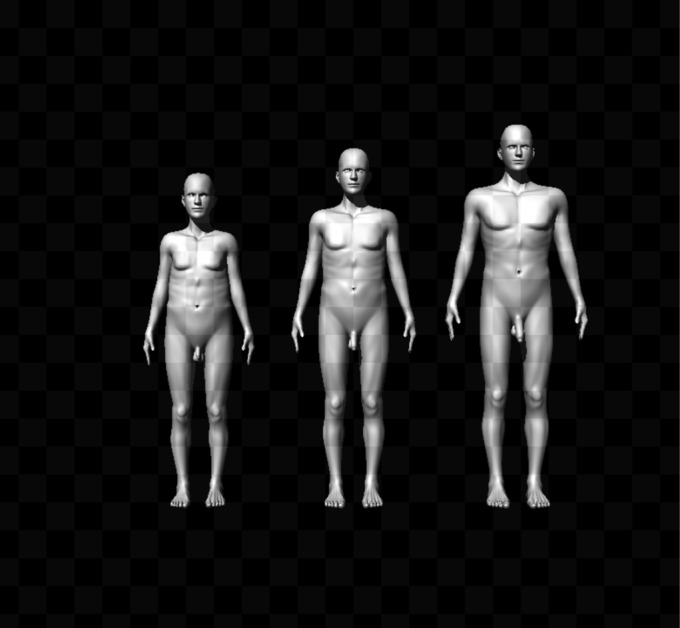A
Asaf Bitoun
Iron
- Joined
- Jan 31, 2025
- Posts
- 6
- Reputation
- 11
Let’s break this down rationally, not emotionally. Fashion is one of the biggest copes in the self-improvement space, right next to “confidence” and “personality.” People want to believe they have control over attraction through external choices - but the evidence from biology, psychology, and dating behavior says otherwise.
Attraction in humans, especially female attraction to males, is primarily driven by morphological and hormonal cues - things that signal genetic fitness. Facial structure (mandibular development, midface projection, eye area symmetry, brow ridge prominence) reflects underlying testosterone exposure, bone growth, and genetic health. These are hard traits, not soft ones.
Fashion, on the other hand, is a cultural overlay - a way to decorate or frame what already exists. You can’t fundamentally alter your sexual dimorphism through clothing. A recessed lower third remains recessed regardless of whether you’re wearing Balenciaga or a Walmart hoodie.
Let’s reference data: studies on dating apps consistently show that facial attractiveness explains the majority of variance in match rates not style. When researchers control for facial attractiveness, clothing and presentation add minimal predictive power. That means the “style effect” is only visible when comparing equally attractive faces. So yes, if two men are both 7/10s facially, the one who dresses better might edge ahead socially. But if one is a 4 and the other is an 8, the 4 can wear designer brands head to toe and still be invisible.
People cope by overemphasizing controllable variables. It feels better to buy clothes than to accept your genetic ceiling. But attraction doesn’t care about effort — only results. A man with poor bone structure and soft features doesn’t suddenly radiate “masculine energy” because his outfit fits well. The neural mechanisms for sexual attraction evolved long before modern fashion existed. They’re scanning for bone, symmetry, and hormone markers not for how your jeans stack with your sneakers.
Even the “status” argument is exaggerated. Status helps only when it’s recognized. Expensive fashion doesn’t convey status to most people unless the brand is obviously elite and even then, it can backfire. A low-tier male in luxury clothing is often perceived as compensating, not attractive. True status signaling in modern society comes from face, physique, and behavior not fabrics.
So when I see people say “style is key,” I interpret that as cope-maxing. They’re trying to rationalize around immutable traits. Yes, fashion might raise your SMV fractionally, but it can’t rewrite your phenotype. It’s like repainting a car with a dented frame - you might make it shinier, but the structure underneath still determines performance.
Bottom line:
Fashion is aesthetics for those who can’t alter their genetics. It’s not a solution it’s a pacifier.
Attraction in humans, especially female attraction to males, is primarily driven by morphological and hormonal cues - things that signal genetic fitness. Facial structure (mandibular development, midface projection, eye area symmetry, brow ridge prominence) reflects underlying testosterone exposure, bone growth, and genetic health. These are hard traits, not soft ones.
Fashion, on the other hand, is a cultural overlay - a way to decorate or frame what already exists. You can’t fundamentally alter your sexual dimorphism through clothing. A recessed lower third remains recessed regardless of whether you’re wearing Balenciaga or a Walmart hoodie.
Let’s reference data: studies on dating apps consistently show that facial attractiveness explains the majority of variance in match rates not style. When researchers control for facial attractiveness, clothing and presentation add minimal predictive power. That means the “style effect” is only visible when comparing equally attractive faces. So yes, if two men are both 7/10s facially, the one who dresses better might edge ahead socially. But if one is a 4 and the other is an 8, the 4 can wear designer brands head to toe and still be invisible.
People cope by overemphasizing controllable variables. It feels better to buy clothes than to accept your genetic ceiling. But attraction doesn’t care about effort — only results. A man with poor bone structure and soft features doesn’t suddenly radiate “masculine energy” because his outfit fits well. The neural mechanisms for sexual attraction evolved long before modern fashion existed. They’re scanning for bone, symmetry, and hormone markers not for how your jeans stack with your sneakers.
Even the “status” argument is exaggerated. Status helps only when it’s recognized. Expensive fashion doesn’t convey status to most people unless the brand is obviously elite and even then, it can backfire. A low-tier male in luxury clothing is often perceived as compensating, not attractive. True status signaling in modern society comes from face, physique, and behavior not fabrics.
So when I see people say “style is key,” I interpret that as cope-maxing. They’re trying to rationalize around immutable traits. Yes, fashion might raise your SMV fractionally, but it can’t rewrite your phenotype. It’s like repainting a car with a dented frame - you might make it shinier, but the structure underneath still determines performance.
Bottom line:
- If your face is low T, your frame is narrow, and your bone mass is underdeveloped, fashion will never bridge that gap.
- If you’re naturally attractive, style can enhance your presentation slightly, but it’s not the cause of attraction - just a frame for it.
- In evolutionary and neurological terms, looks precede style, not the other way around.
Fashion is aesthetics for those who can’t alter their genetics. It’s not a solution it’s a pacifier.




